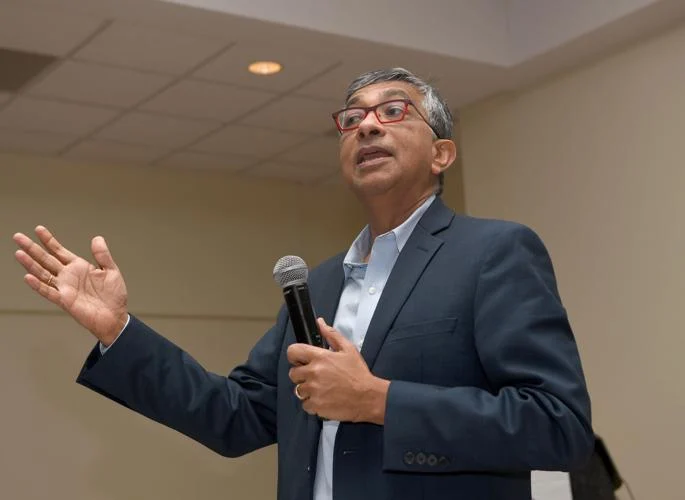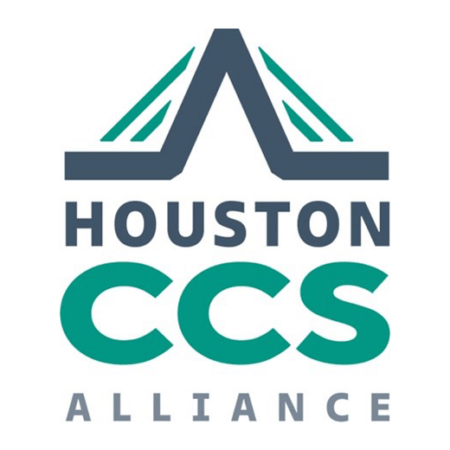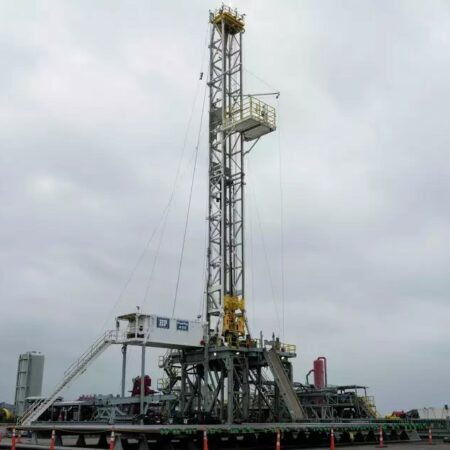Carbon Capture and Storage just may save the planet
(The Baytown Sun) Members of the Houston CCS Alliance spoke to the Rotary Club of Baytown recently about carbon capture and storage, how it works, and why it is vital. The group emphasized how Carbon Capture and Storage is safe and proven.
Links to University of Houston white papers are included at the end of the article, detailing studies, the background, existing CO2 pipelines in the United States, regulations, tax credits, benefits and risks.
Read below what alliance members explained. For further details, read the white papers to learn about three proposed scenarios in one particular study: a reference case (10%-20% of regional industrial CO2 emissions captured); an accelerate case (40%-50% CO2 captured); and the Net Zero case (90%-100% CO2 captured) by 2050.
Ramanan Krishnamoorti, PhD, of the Division of Energy and Innovation at University of Houston, gave an enlightening explanation which put CCS in simplistic terms.
?How do we make sure we have affordable, reliable and sustainable energy? We look at CCS as a collaborative partnership.?
?It is the process by which we capture carbon dioxide, the largest greenhouse gases. It comes in large part by the burning of fossil energy, but not the only source. Burning fossil energy creates 75% of the carbon dioxide. The other 25% comes from other human activity like agriculture and deforestation.
?That results in what we are seeing in global warming. There is a correlation between the increase in CO2 and the increase in temperatures. The real challenge is we?ve never seen such a sharp rise in CO2 and temperature.
?How does humankind adapt to this? The problem at hand is carbon emissions.
?The focus of CCS is addressing carbon emissions at source and taking them out of the environment before it starts to do harm. Then, put it away where it came from.
?It is an expensive proposition to add carbon capture to any point sources, such as power plants, chemical factories and refineries.
?When we drive our cars, the CO2 is about 20% and 80% nitrogen, until it leaves the tailpipe. Then the concentration goes down dramatically. When CO2 hits the environment, it gets down to 400 parts per million.
?Capturing concentrated CO2 at its source keeps the costs down. The cheapest capture price is about $25 per ton. Then we need to take the CO2 and transport it by pipeline and put it in the ground where it can be safely sequestered in the same places that hold other resources like oil and gas. It has caprock so the CO2 doesn?t leak. It has floor space, so the CO2 goes there and becomes a liquid. It is not a gas anymore when it hits subsurface. It is like water. It feels and it is as dense and heavy as water.
?That is where it resides for the rest of humankind, if not the world itself.
?So, that is the real goal of CCS. The first time we thought about carbon capture was in 1930, 20 years after the automobile became popular. 1930 was the first patent.
?The first large-scale capture was done in 2008. It is being done and stored in places like the Permian. We can produce more oil by pushing the CO2 back.
?The carbon tax credit ?45Q,? provided by the Treasury is for anyone who captures CO2 and stores it safely. The tax credit up to $85 per ton of credit if you capture and store it subsurface.
?If you capture it and use it for enhance oil recovery, it is $60 per ton. You can make money.
?It does good for all of us. There is an enormous economic opportunity. We emit 40 billion tons of CO2 annually. Today, with all the CCS that is being done, we capture 40 million tons (three orders of magnitude). Most projects are in the United States. We have leadership in this space. ?Worldwide, this must be done. We can capture this global leadership. It?s an incredible economic opportunity to help the world become a cleaner place, but also provide that global, technical leadership in an area that is going to continue to grow globally.
Summarizing, there are three reasons to do this:
1) It does good for the planet.
2) It is an enormous economic opportunity, and
3) We can be global leaders in a space that is technologically complex, but really important.
University of Houston has put together white papers to bust the myths surrounding CCS, which can be found at the links at the end of this story.
Scott Castleman of Houston CCS Alliance:
?Carbon capture and storage has been proven. It has been done over 50 years now. Major universities have studied it for decades. It is a safe and viable practice.
?Studies have been done on what else comes out of the air when carbon capture has been done.
CCS provides jobs and the ability for companies to give back to the communities.
?It is estimated that CCS will create 18,000 jobs in Texas annually over a 15-year period with 60 billion dollars in private investment.
?Thirteen of the largest companies in the alliance started working together two years ago to identify ways to work together to make the biggest impact possible.
Houston is one of the largest centralized sources of CO2 emissions. A lot of that comes from the industrial community. Our companies want to lead in this area and make Houston a global leader.
Houston can more than double the global carbon capture. The goal is 50 million metric tons by 2030 and 100 million by 2040.
?There will be a lot of discussion on CCS in 2024. The EPA is going to hold a comment period in 2024 to grant the State of Texas primacy, the ability to permit the injection wells. We want to make sure our state leaders understand the importance of this technology.?
Cathryn Martinez handles community and government relations for Calpine, an energy company:
She spoke to the Rotarians about how Calpine is a good corporate citizen. Calpine is focused on the capture portion of CCS, and at the same time they are reaching out to find non-profit opportunities to volunteer their people in the communities in which they work. Martinez? role is listening and understanding what is needed in the energy sector regarding any social gaps. She tries to find out where they can help financially and with personal volunteers.
She can be reached at Cathryn.martinez@calpine.com.
Scott Whitmire is project director for Chevron?s Bayou Bend CCS, Southeast Texas:
?Chevron has two large acreage positions, one offshore in Jefferson County called Bayou Bend East, in the Golden Triangle area, and the other is onshore acreage including 100,000 acres in Chambers and Jefferson Counties, where they take industrial facilities? CO2 and complete the value chain.
?We will take what they are capturing within their industrial facilities, transport it and ultimately store it, in perpetuity, in our onshore acreage.
?Between the two acreage positions, we have about 140,000 acres with the storage potential of about 1 billion metric tons. We are in the center of a large CO2 emission area.
?The CO2 will be injected about 5,000 feet below the earth?s surface with a clear ceiling layer of shale, keeping the CO2 in place. We are also doing pipeline planning. We are trying to educate for awareness on what we are trying to accomplish with the project.?
Paul Guilfoyle, ExxonMobil Venture Executive, spoke on how the Baytown Blue Hydrogen Project ties into CCS:
?ExxonMobil has created a new business called Low Carbon Solutions. The idea is to bring low carbon opportunities, as part of the energy transition, to decrease the carbon emissions of our own business and provide solutions to the industry.
?We have the upstream in oil and gas, and the downstream in chemicals. A couple years ago we created Low Carbon Solutions.
?One area of focus is CCS. The other is in the production of blue hydrogen. We are also looking at biofuels and Lithium as a way to enable electricity.
ExxonMobil just purchased Denbury, an oil and gas company. They do CCS. They have a pipeline from Friendswood to the eastern part of Mississippi, Denbury Gulf Coast Pipelines.
?They take carbon dioxide in, and they sequester it.
?We will be providing these services for ourselves, and also for industry.
?We are going to take methane, which is burned in homes today, take the hydrogen off of it, and take the carbon in that molecule, turn it into CO2 and put it in the Denbury Pipeline and sequester it.
?That just leaves hydrogen. There is no carbon in hydrogen. When you burn hydrogen, you make water. So, the CO2 that would have been using goes into the ground. The hydrogen is burned in our facility, and we decarbonize. That is how the Baytown Blue Hydrogen Project ties into the overall CCS effort.
ExxonMobil has committed a large investment of capital to the idea of CCS.
Currently, members of the Houston CCS Alliance include: Air Liquide, BASF, CALPINE, Channelview Cogeneration, Chevron, DOW, ExxonMobil, INEOS, Linde, Shell, lyondelbasell, Marathon and Phillips 66.
Other partners include: the Greater Houston partnership, Texas Association of Business, Texas 2036, East Harris County Manufacturers Association (EHCMA), Houston Wilderness, Texas Chemical Council, Baytown Chamber of Commerce, Texas Oil and Gas Association, Texas Association of Manufacturers, Houston Port Region Economic Alliance, City of Houston, Chambers County, Harris County, Jefferson County and the University of Houston.
Visit www.HoustonCCS.com/newsroom to learn more and read the white papers and related stories linked below:
https://baytownsun.com/news/exxon-to-build-hydrogen-carbon-capture-plant/article_b481df6a-9a97-11ec-9df2-2fc38abd5149.html
https://baytownsun.com/news/exxonmobil-low-carbon-solutions-president-tours-baytown-complex/article_c423007c-031d-11ed-b1c8-b37d6e873c20.html
https://baytownsun.com/local/exxonmobil-plans-energize-plant-manager/article_8bf84c7e-5408-11ee-ae2c-93994ab82e9a.html
https://uh.edu/uh-energy-innovation/uh-energy/energy-research/white-papers/white-paper-files/community-co2.pdf
https://uh.edu/uh-energy-innovation/uh-energy/energy-research/white-papers/white-paper-files/future-of-houston-113023draftc.pdf







